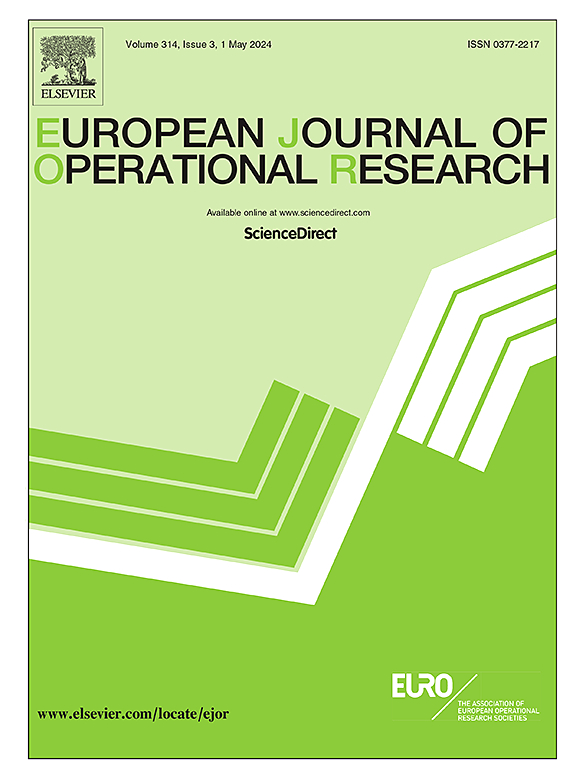Inherently interpretable machine learning for credit scoring: Optimal classification tree with hyperplane splits
IF 6
2区 管理学
Q1 OPERATIONS RESEARCH & MANAGEMENT SCIENCE
引用次数: 0
Abstract
An accurate and interpretable credit scoring model plays a crucial role in helping financial institutions reduce losses by promptly detecting, containing, and preventing defaulters. However, existing models often face a trade-off between interpretability and predictive accuracy. Traditional models like Logistic Regression (LR) offer high interpretability but may have limited predictive performance, while more complex models may improve accuracy at the expense of interpretability. In this paper, we tackle the credit scoring problem with imbalanced data by proposing two new classification models based on the optimal classification tree with hyperplane splits (OCT-H). OCT-H provides transparency and easy interpretation with ‘if-then’ decision tree rules. The first model, the cost-sensitive optimal classification tree with hyperplane splits (CSOCT-H). The second model, the optimal classification tree with hyperplane splits based on maximizing F1-Score (OCT-H-F1), aims to directly maximize the F1-score. To enhance model scalability, we introduce a data sample reduction method using data binning and feature selection. We then propose two solution methods: a heuristic approach and a method utilizing warm-start techniques to accelerate the solving process. We evaluated the proposed models on four public datasets. The results show that OCT-H significantly outperforms traditional interpretable models, such as Decision Trees (DT) and Logistic Regression (LR), in both predictive performance and interpretability. On certain datasets, OCT-H performs as well as or better than advanced ensemble tree models, effectively narrowing the gap between interpretable models and black-box models.用于信用评分的可解释机器学习:带有超平面分裂的最优分类树
准确且可解释的信用评分模型在帮助金融机构及时发现、控制和预防违约者以减少损失方面发挥着至关重要的作用。然而,现有的模型往往要在可解释性和预测准确性之间做出权衡。逻辑回归(LR)等传统模型具有较高的可解释性,但预测性能可能有限,而更复杂的模型可能会以牺牲可解释性为代价来提高准确性。本文针对不平衡数据的信用评分问题,提出了两种基于超平面分割最优分类树(OCT-H)的新分类模型。OCT-H 通过 "if-then "决策树规则提供透明度和简易解释。第一个模型是具有超平面分割的成本敏感最优分类树(CSOCT-H)。第二个模型是基于 F1 分数最大化的带超平面分割的最优分类树(OCT-H-F1),旨在直接使 F1 分数最大化。为了增强模型的可扩展性,我们引入了一种利用数据分选和特征选择减少数据样本的方法。然后,我们提出了两种求解方法:一种是启发式方法,另一种是利用热启动技术加速求解过程的方法。我们在四个公共数据集上对所提出的模型进行了评估。结果表明,OCT-H 在预测性能和可解释性方面都明显优于传统的可解释模型,如决策树(DT)和逻辑回归(LR)。在某些数据集上,OCT-H 的表现不亚于甚至优于先进的集合树模型,有效缩小了可解释模型与黑盒模型之间的差距。
本文章由计算机程序翻译,如有差异,请以英文原文为准。
求助全文
约1分钟内获得全文
求助全文
来源期刊

European Journal of Operational Research
管理科学-运筹学与管理科学
CiteScore
11.90
自引率
9.40%
发文量
786
审稿时长
8.2 months
期刊介绍:
The European Journal of Operational Research (EJOR) publishes high quality, original papers that contribute to the methodology of operational research (OR) and to the practice of decision making.
 求助内容:
求助内容: 应助结果提醒方式:
应助结果提醒方式:


